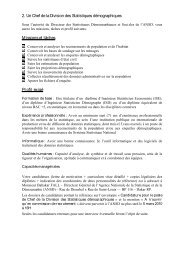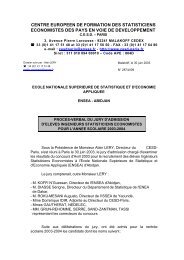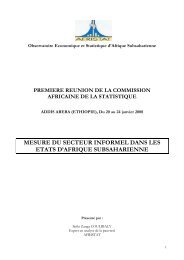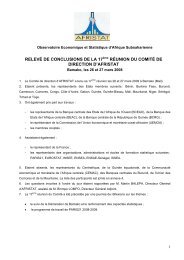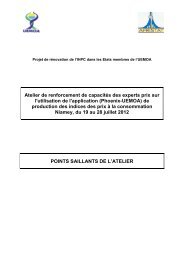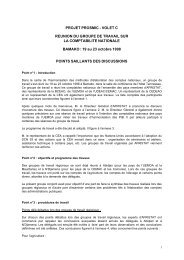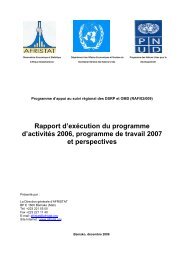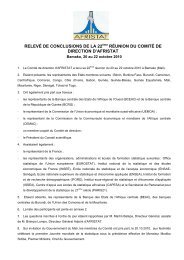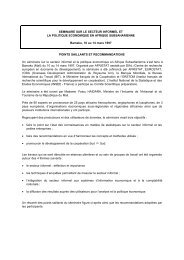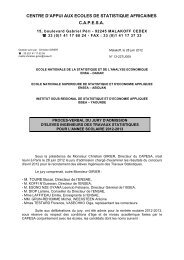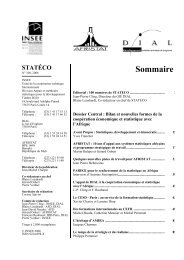Global Purchasing Power Parities and Real Expenditures - Afristat
Global Purchasing Power Parities and Real Expenditures - Afristat
Global Purchasing Power Parities and Real Expenditures - Afristat
You also want an ePaper? Increase the reach of your titles
YUMPU automatically turns print PDFs into web optimized ePapers that Google loves.
162 <strong>Global</strong> <strong>Purchasing</strong> <strong>Power</strong> <strong>Parities</strong> <strong>and</strong> <strong>Real</strong> <strong>Expenditures</strong>Because a single scalar applied to all economieswithin a region at each level of aggregation, all basicheadingrelative comparisons of economies in eachregion remain the same as they were in the regionalcalculations.The next step was to average the global basic-headingPPPs to GDP <strong>and</strong> major aggregates. The volumes for eachbasic heading were summed up across all economies withina region to obtain regional total volumes in the numerairecurrency. The between-region basic-heading PPPs wereaggregated to higher levels using regional relative volumesas weights by the EKS method.The outcomes were PPPs (<strong>and</strong> volumes calculated fromthem) at the basic-heading <strong>and</strong> aggregate levels that preservedfixity within each region (see below) <strong>and</strong> could becompared between any pair of economies in the world.(See appendix H, which provides a worked example.)How Regional Results Compare with the<strong>Global</strong> LevelsThe following two tables provide an example showing howthe regional PPPs <strong>and</strong> all other related measures are calibratedto the global level. Table 6 shows the regional pricelevel indexes (PLIs) (United States = 100) for the publishedaggregates of the GDP. They are a weighted average of theeconomy price levels. The regional PLI for each aggregateis the ratio of regional total nominal expenditures (US$) tothe regional PPP or real expenditures.The global PLI at each level of aggregation for eacheconomy within a region is the regional PLI multipliedtimes each economy’s PLI (region = 100), as shown in theirrespective regional reports. The table shows that the regionalPLIs vary considerably across the major aggregates.Table 7 shows how the regional price level indexes forAsia-Pacific are calibrated to the global level. Note that thePLI for Asia-Pacific’s GDP is 41. Table 7 shows the PLIsTable 6Regional price level indexes for each level of aggregationPRICE LEVEL INDEXU.S. = 100 africa Asia-Pacific CIS Eurostat-OECD South America Western AsiaGDP 46 41 43 99 52 51Actual individual consumption 46 39 36 98 52 49Food <strong>and</strong> nonalcoholic beverages 83 60 55 111 69 62Alcoholic beverages, tobacco, & narcotics 64 65 37 93 37 49Clothing <strong>and</strong> footwear 65 56 91 111 82 60Housing, water, electricity, gas, & other fuels 30 39 17 92 48 60Furnishings, household equipment, & maintenance 57 62 67 107 72 54Health 22 9 15 76 27 19Transport 89 70 72 123 89 55Communication 92 35 61 98 58 93Recreation & culture 77 48 51 107 79 76Education 15 11 8 67 28 21Restaurants & hotels 78 73 66 124 71 118Miscellaneous goods & services 48 46 45 102 54 44Source: ICP <strong>Global</strong> Office.



